Contents


It is difficult to imagine summer without cucumbers, so in our summer cottages they take pride of place next to potatoes, tomatoes and cabbage. It would seem that much has been written about how to properly plant cucumbers, but beginner gardeners still accumulate a lot of important questions about this. You can learn from this article how to decide on the choice of the variety of these vegetables, how to properly prepare the soil for planting, fertilize it, prepare the seeds and carry out the planting itself, taking into account all the nuances.
Choosing a variety and seeds
So what are the varieties of cucumbers? They are divided into groups according to several parameters – the purpose of the variety, which includes salad types of vegetables that have white spikes, small seeds and soft peel, as well as pickled ones that can become rough and tasteless when overgrown.
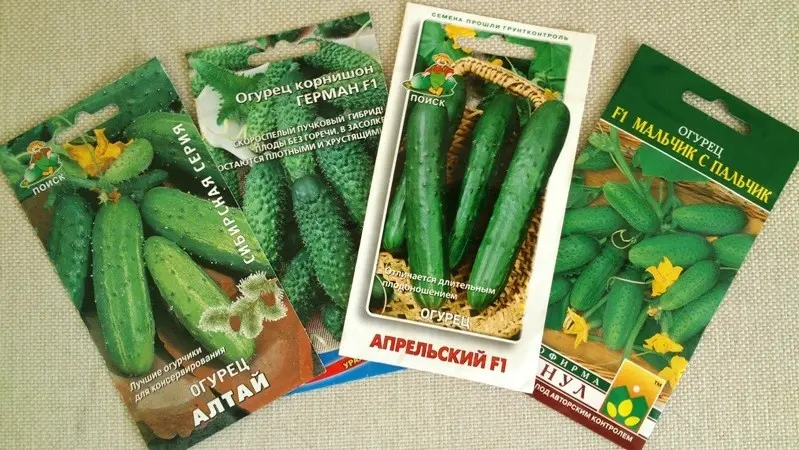
By pollination, there are varieties of vegetables such as self-pollinators or parthenocarpic, as well as those that are pollinated by bees. Other types of cucumbers are distinguished according to the ripening time – there are early varieties, popularly referred to as sprinters, which not only ripen quickly, but also give an instant crop, grow old and lose this ability, as well as late species, in which the harvest time is more extended during time.
The earliest varieties of cucumbers – lettuce – are usually grown in a greenhouse or under a film. Their features are neutral taste, thin skin and elongated shape. Among the best types of vegetables that are well suited for growing in a greenhouse and making nutritious salads in the future are varieties such as Murashka F1, Boy with a finger, Benefis F1, Alekseich F1, Emelya F1. For example, Goosebump F1 is an early ripening type of vegetable crop, the crop of which can be harvested after 42 – 45 days, is self-fertile. Its bush is of medium size, large-tuberous fruits with small spikes, which can reach a length of up to 12 cm. It has good taste characteristics, completely devoid of bitterness. Suitable not only for growing in a greenhouse, but also for open ground.
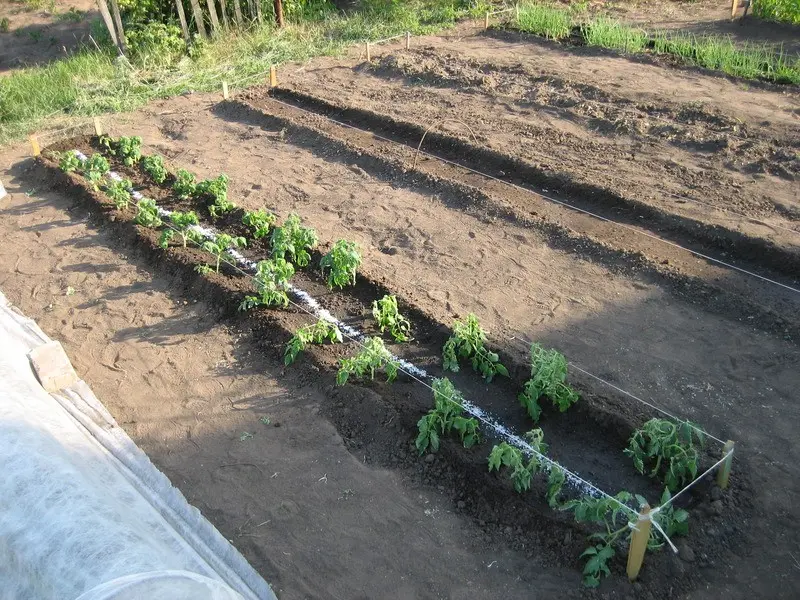
Among salad cucumbers, the varieties of which experts advise to prefer for growing in open ground, such species as April F1, Erofey, Masha F1, Ant F1, Competitor, Rodnichok F1 and others have proven themselves well. Vegetables of the April F1 variety are an early-ripening hybrid, the fruiting of which occurs in 45 – 55 days. Due to the compact size of this plant, it is possible to grow it not only in your own garden plot, but also in balcony boxes. It has characteristic cylindrical fruits, which, weighing up to 250 grams, grow up to 25 cm in length. This variety is distinguished by an increased degree of cold resistance, undemanding to care conditions and increased productivity if the plants are well cared for.
It is not so difficult to distinguish a pickled cucumber from a lettuce one – its fruits are distinguished by a shorter length, up to 8 cm, and strongly tuberculate black spikes are clearly visible on the surface. There are varieties with white spikes that experts do not recommend for salting. Because fruits with black spikes and a thin porous peel are better suited for her. Such vegetables have special transverse bundles inside, which give the cucumbers the desired crunchiness and density.
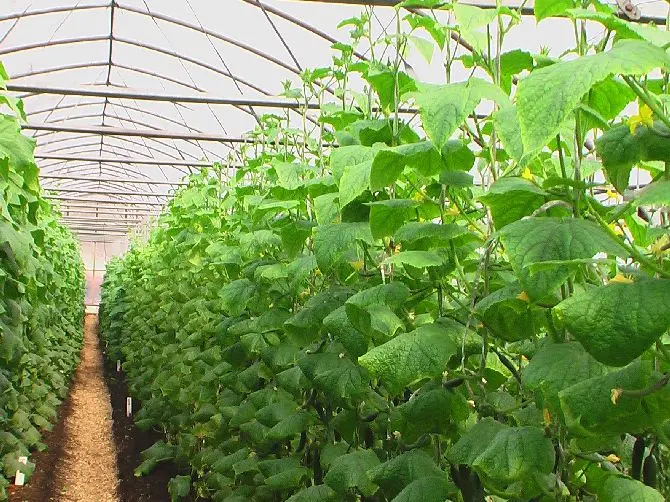
The classic types of pickled cucumbers include Nezhinsky, Coastal, Murom, Debut, Parker and others. Variety Nezhinsky childbirth from Ukraine. The whip of such a culture can grow up to several meters. It is considered late-ripening, since the first harvest can actually be harvested after 50 or more days. Its cucumbers have an elongated ovoid shape, weigh up to 100 grams, and have a good taste. Based on the variety, several variety types have been created today – Era, Etap, Nosovsky. Caring for this crop involves constant watering, since this variety has a need for moisture in large quantities.
Among the varieties with an early ripening period, it is worth mentioning Altai Early 166, Zozulya, Vyaznikovsky 37, Cascade, Graceful, Muromsky 36, Universal, Competitor and others. Variety Altai early 166 bears fruit after 37 days, has a good yield with proper care. Its fruits are ovoid in shape, they are small-tuberous and light green, grow up to 9 cm in length and weigh up to 80 grams. The variety has a strong immunity to fungal infections and normally tolerates cold.
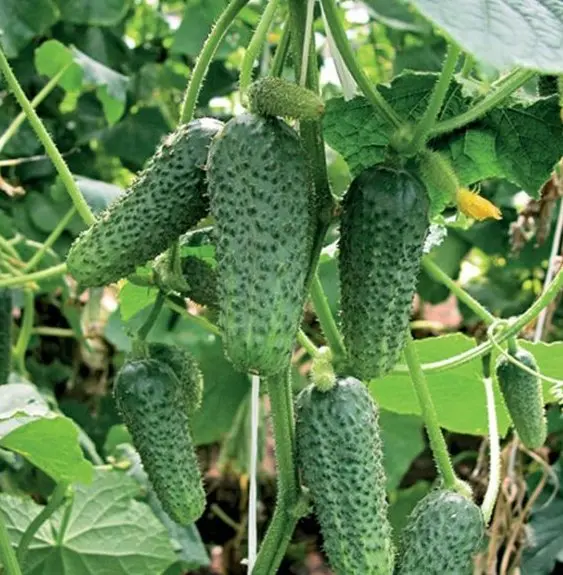
Among vegetables with a late ripening period, one can name Rodnichok, Nezhinsky local, Nerosimy 40, Farmer, Aquarius, Droplet. The Rodnichok variety appeared not so long ago – in 1987, but has already managed to fall in love with our summer residents. On the bushes of this type of vegetable crop, fruits with a smooth surface appear, having a cylindrical shape, weighing up to 100 grams and about 11 cm long. The yield of this type of cucumber is very high, subject to normal care. Their owner will be able to enjoy vegetables that have an excellent taste and do not have bitterness.
Video “Planting cucumbers”
Soil Preparation
Before planting cucumbers, competent preliminary preparation of the land should be carried out. It is necessary to start soil cultivation in the fall, long before sowing seeds. For this, it is best to use about 4 buckets of manure, 4 glasses of wood flour, up to 100 grams of nitrophoska per square meter.
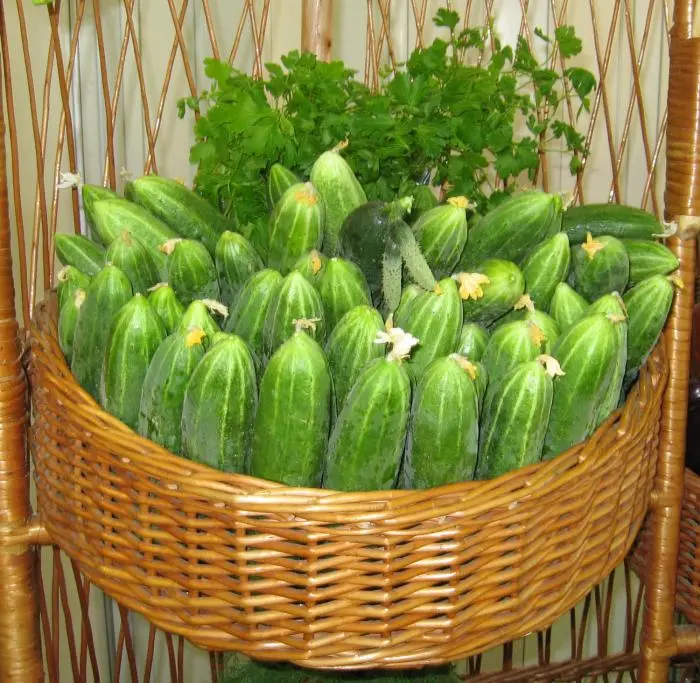
When spring comes, the soil will need to be dug up, while the depth should be about 25 cm. Then the beds are covered with a layer of fertile soil up to 15 cm and the sides for irrigation are formed.
Even if for some reason you could not carry out the autumn planting of dressings in the ground, a week before sowing the seeds, dig a groove, fill in the manure, and place up to 16 cm of fertile soil on it. After that, it is necessary to cover the bed with a film.
Sowing seeds in prepared land is best done in mid-May. If you do not have the above drugs on hand, you can use improvised materials. To do this, take rotten leaves, fresh grass, straw, sawdust, pieces of paper. All this will need to be compacted, laid in a groove, and a layer of fertile soil should be placed on top. On the 20th of May, dig the earth, before that, regularly weed and level it with a rake. Before sowing, place the beds at a distance of about 80 cm – 1 meter from each other, water the soil at the rate of 5 liters of water per square meter. The depth of planting seeds should be no more than 2 cm.
Soil fertilization
Before planting cucumbers on the site, the soil should be fed. Cucumbers respond well to the introduction of organic fertilizers into the soil, which have the ability to improve the quality of the soil structure. It is recommended to spray the beds before planting with a solution of copper sulfate at the rate of 1 tablespoon of the product per 10 liters of water. From organic top dressing, experts advise using fresh manure, which must be applied to the soil in the fall. It becomes humus in the soil, and is also able to bind the structure of sandy soil and loosen heavy clay soil.
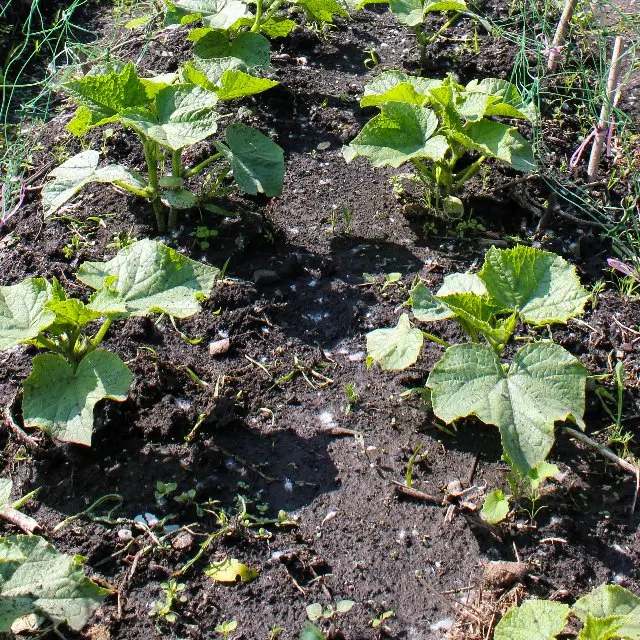
If you are dealing with loamy or heavy loamy soil, it is best to apply manure 30 to 50 days before sowing seeds, since such land warms up for a long time. Manure contains potassium, calcium, phosphorus, nitrogen, and its application rates vary in the range of about 6-9 kg per square meter. In the spring, it is also recommended to add compost to the soil. Under the condition of high-quality and competent top dressing of the land with organic matter, the effectiveness of mineral fertilizers also increases several times.
From mineral dressings, ash is used today, which can become an alternative to potash compounds. It is applied to the soil at the rate of approximately 200 grams per square meter of area. During spring digging, ammonium nitrate is also embedded in the soil at the rate of 15 grams per meter, superphosphate – about 40 grams per meter, potassium salt – up to about 25 grams per square meter. Such preplant soil care is sure to give good results.
We prepare the seeds
A gardener who does not have the proper experience, after acquiring seeds, can simply sow them immediately. But you need to know that seeds require careful preliminary preparation, which will allow you to get not only equal inputs, but also an excellent harvest of your favorite vegetables. It is necessary to select not only large-sized, but also full-weight seeds, and then place them for 20 minutes in a saline solution. It is not difficult to prepare it at home – for this you need to take about 50 grams of simple salt and dissolve it in a liter of water.

When carrying out such a simple procedure, frail and unsuitable seeds for planting float to the surface. After such selection, it is still necessary to soak the seeds in a special fertilizer solution. Nitrophoska has proven itself well in this regard, which is customary to take a teaspoon per liter of water, and add a tablespoon of wood ash there. Also, experts and experienced gardeners advise warming up the seeds before planting. You can just keep them near the battery for a month. And some, in order to get an early harvest of cucumbers, also carry out the procedure for hardening the seeds.
How to land
There are several types of planting cucumbers and many more ways to plant them in the garden. Species is the planting of these vegetables using seeds or seedlings. For example, in central Our Country, cucumbers are planted in late May – early July. It was at this time that the soil was already warm enough and ready. Before planting seeds or seedlings, they dig a hole, the depth and width of which should be about 30 cm, humus or manure up to 15 cm is placed on the bottom, then a mixture of soil and manure is added to form a mound. Planting seeds is traditionally carried out in rows, the distance between which is up to 70 cm, the depth is about 2 cm, and the interval is up to 15 cm. No more than 2-3 seeds are sown in each hole, after germination they will need to be thinned out.
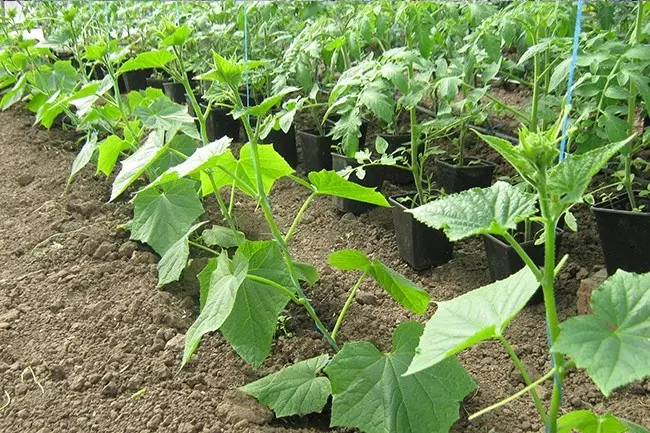
What are the only methods of planting cucumbers do not use modern gardeners! Among them is the cultivation of vegetables in barrels, which are filled by a third with vegetable waste along with the earth. Also an interesting way is to grow vegetables in bags or bags, in which the seeds are placed in specially made staggered cuts. Also, landing in a cucumber tent, created from a pipe, ropes and branches, is considered an original and interesting method. You can also grow vegetables on a trellis, on which grown cucumber bushes are fixed, as well as on willow twigs for those gardeners who do not like complex structures. Growing vegetables under a black film will allow you to place vegetables on a warm bed, such a mulch will reliably protect them from the cold.
Video “How to grow cucumbers”
From the video you will learn what manipulations should be carried out with seedlings or cucumber seeds in order to get the best harvest.









